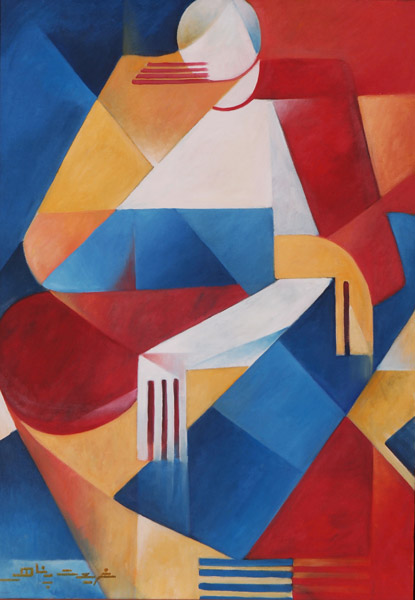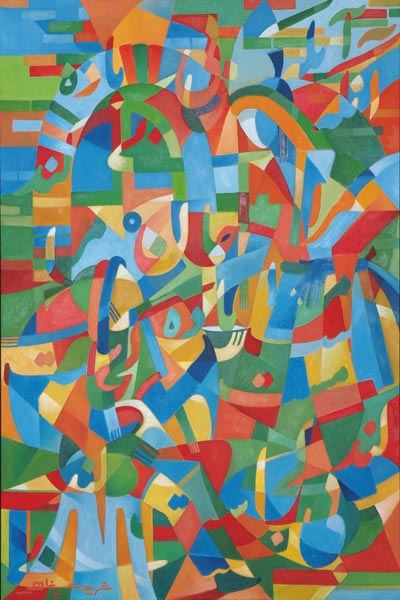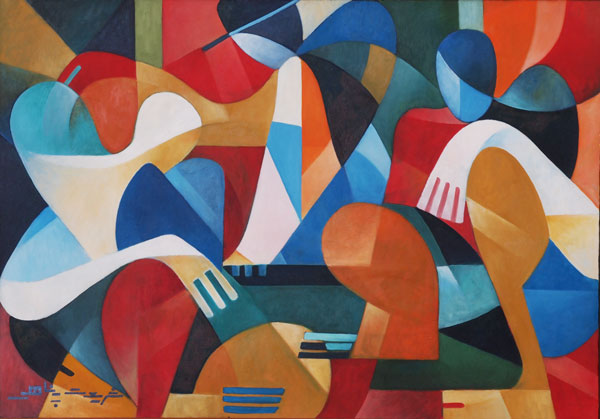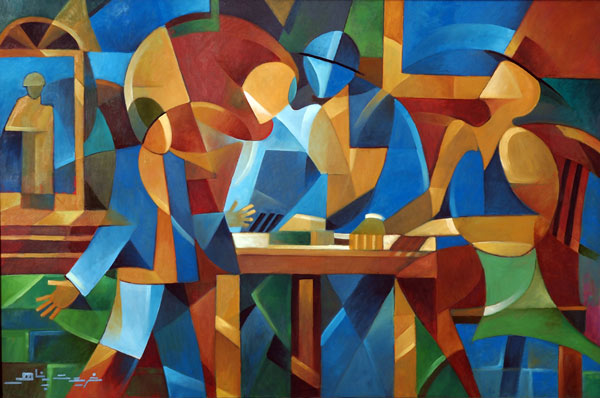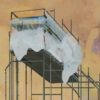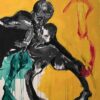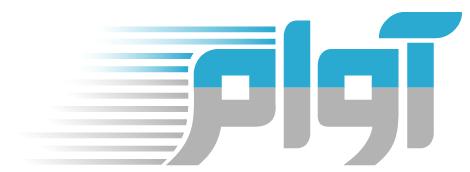Asadullah Shariatpanahi, Senior Iranian Artist goes world wide
Time compression,A Criticism on the Hidden Vein of Colors Exhibition, by Asadullah Shariatpanahi
An Art Critique by Javid Ramezani
Published in artnewsportal by: SUSAN MILLER | 15-SEP-2017 art |
Time compression. A Criticism on the Hidden Vein of Colors Exhibition in Iranian Artists Forum. By: Javid Ramezani; Art Philosophy PhD.
How much does painting depend on time? The inner time of each artwork leads to infinity. It means the experience of people’s life has been tangling over the centuries up to now. And the audience as a questioner receives all this time at a moment. The artist’s mental processing derives from an eternal challenge combined with the continuity of memories in the form of styles and works of art from the depths of the his or her unconscious and the foresight. An attempt that sometimes refers to an ideal and far-reaching dream.
How much does painting depend on time? The inner time of each artwork leads to infinity. It means the experience of people’s life has been tangling over the centuries up to now. And the audience as a questioner receives all this time at a moment. The artist’s mental processing derives from an eternal challenge combined with the continuity of memories in the form of styles and works of art from the depths of the his or her unconscious and the foresight. An attempt that sometimes refers to an ideal and far-reaching dream.
The collection of Asadollah Shariapanahi’s works is presented at the Hidden Vein of Colors Exhibition in the Hall of Iranian Artists Forum. These works in different sizes and with the acrylic technique and oil paint on the canvas are the last searches and explorations of the artist exposed to the audience’s judgment. Shariatpanahi has been unpopular in modern and bio-historic confrontation.
Presenting and hiding the perspective space in the artist’s works, along with the usual way in deformation and the cubist reduction of his early sights, are so important to the artist. But the deep and contemplative point is in works whose technical departure is not from realistic nature but from the painting scenery.
Painting surfaces, which quantitatively are the same in terms of density and plurality, have been expanded with a wider variety of colors by the artist. In particular, adding the element of writing line as a single Iranian art form, which does not have a true realistic origin, indicates the intention of the artist to apply an abstract line to the Iranian imaginary realism. From Shariatpanahi’s point of view, reference images for deformation process and fragmentation and surfacing in his recent works, as stated in the artist statement, has contemporary time subjects. Although this approach has presented a wider category for his works, it is under the unconscious tendency of the artist and in some of his works it has surpassed from the realistic visual expression level. The main weak point of this show is the multiplicity and diversity of these approaches. Though the audience is faced with the apparently similar works that can display the strategy of the painter’s encounter with painting, with a closer look, the spiritual effort of the hard-working artist, and the attempt and agitation in the process of creating these works are also evident.
Shariatpanahi, dealing with the space-time issue, can take advantage of this visual deadlock as the futurist works spread along the same theory of the Cubist view.The motivation and perseverance of the painter and many years of his effort and practice are appreciated, and show that the approach of this professor
is developing from quantitative level to qualitative one. Paying attention to the element of contour and the expansion of design space, along with the strategy of limiting the elements of the image and colors, may be a way to continue time compression and space expansion.
Most of Shariatpanahi’s works have a wide range of surface denseness. But the works providing wider surfaces and the possibility of going beyond realistic conceptualization, can give the audience a feeling of freedom and imagination. However, in some works, using regular hachure has produced highly velvet tissues which are a positive technical point and the future facilities of the artist.
Undoubtedly, the art of Shariatpanahi is a reflection of his inner mirror. This mirror transcends its climatic boundaries honestly and has settled on its internal borders. He is a simple teacher who has not participated in the ups and downs of the art capital inhabitants. Today; however, the influx of time and the passing of life has involved him with the system of contemporary art domination. Beckett says: being an artist is a failure, a failure that nobody dares to experience.
Perhaps in contemporary art, the concept of identity and time is involved with a new hegemony; but it forms an eternal struggle that is the condition of mankind existence in constant breakdown of past forms of thought. The totality of the lives of artists is so important that becomes part of essentials, such as colors, canvas and their lives. Presenting small beauties in works of artists, what I consider as living and a being quiet in the corner, provides a poetry of civilization. Happy colors and repainting the landscapes of the past painters that seem identical and sympathetic in emotions to me in the world of today’s images, are all that the painter will live for. The little beauty of Shariatpanahi’s works does not need high peak of art history, the history of art has written our defeated time by the conquerors and it is abundantly free from the beauties that are promising and encouraging.
Art critiques on other Iranian artists:

ناگفتههایی از بازیگران اصلی دنیای هنر و هنرمندان موفق
هنرمندان موفق چه مسیری را طی میکنند؟ ماگنوس رش نویسنده کتاب «چگونه هنرمند موفقی شویم؟» میگوید: حیرت میکنم از اینکه میبینم هنرمندان چقدر اطلاعات کمی از تاریخچه بازار هنر، ساختار قدرت و بازیگران اصلی آن دارند؛ مانند هر بازار دیگری، درک تاریخچه بازار هنر میتواند در پیشبینی آینده آن به ما کمک کند. همچنین در ادامه میدهد: زمانی که فعالیتم را در دنیای هنر شروع کردم، یک حرف، وِرد زبان همه هنرمندان بود: «نمیتوان خلاقیت را اندازه گرفت. موفقشدن یک […]
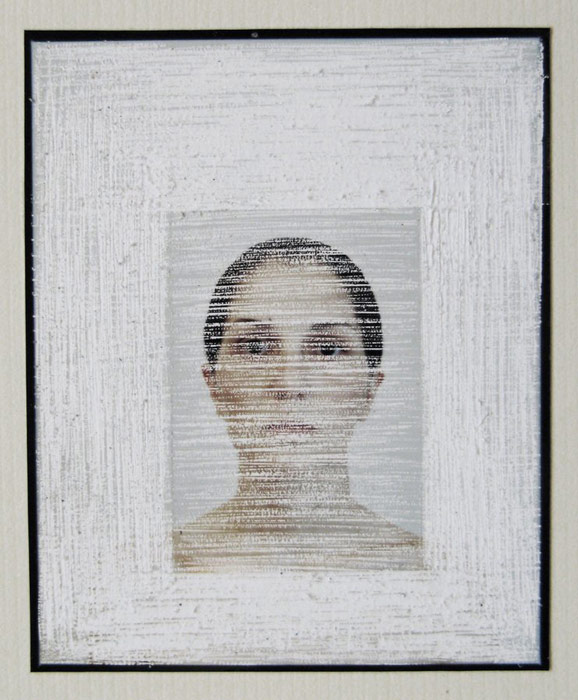
هنرمند/منتقد؛ هم این و هم آن
هنرمند/منتقد | اثر چیست؟ معنای احتمالی آن چیست؟ به چه درد میخورد؟ در این روزهایی که عکس و عکاسی از من گریختهاست یا من از آن فرار کردهام چه چیز میتواند برایم بامعناتر/بیمعناتر از دبیری بخش عکاسی یک مجلۀ هنری باشد. رنگ این روزها رنگ همهچیز را عوض کرده است. عکس برایم رنگباختهاست و میدانم به سبب همین رنگعوضکردنش در لحظه است که اینگونه دوستش میدارم.[…][۱] […] موضوع، خود عکاسی است همانگونه که چیزها خود عکس هستند. «من» هم تکهای […]
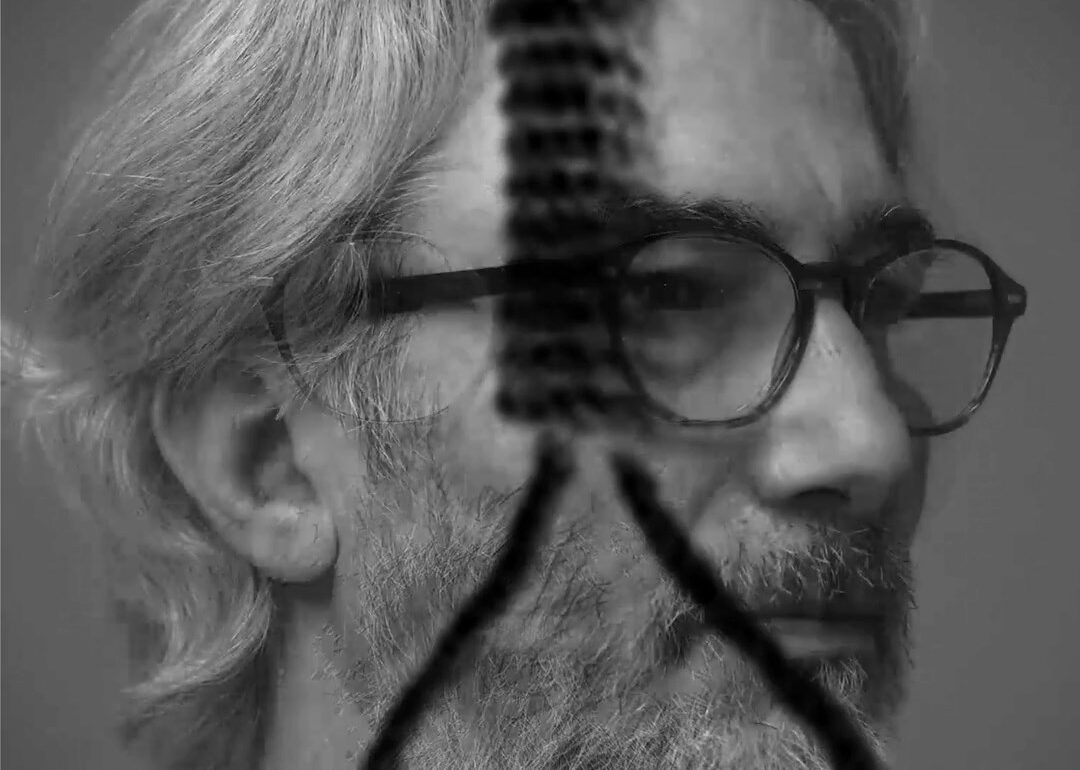
مسعود اسکندری ؛ عکاس مهاجر
مسعود اسکندری خویی متولد ۲۳ آذر ۱۳۴۰ دانش آموخته عکاسی از دانشگاه هنر . فوق لیسانس عکاسی از دانشگاه هنرتهران و مستند نگاری از دانشگاه Ryerson کانادا (Master of Fine Arts in Documentary Media) . تدریس در گالری هنر همیلتون و دستیار خانم Pearl Van Geest هنرمند و مدرس نقاش کانادایی .

Bita Vakili | A Critic on Bita Vakili’s exhibition | Should pass
By javid Ramezani
Translated by Behrad Sharifi

ناگفتههایی از بازیگران اصلی دنیای هنر و هنرمندان موفق
هنرمندان موفق چه مسیری را طی میکنند؟ ماگنوس رش نویسنده کتاب «چگونه هنرمند موفقی شویم؟» میگوید: حیرت میکنم از اینکه میبینم هنرمندان چقدر اطلاعات کمی از تاریخچه بازار هنر، ساختار قدرت و بازیگران اصلی آن دارند؛ مانند هر بازار دیگری، درک تاریخچه بازار هنر میتواند در پیشبینی آینده آن به ما کمک کند. همچنین در ادامه میدهد: زمانی که فعالیتم را در دنیای هنر شروع کردم، یک حرف، وِرد زبان همه هنرمندان بود: «نمیتوان خلاقیت را اندازه گرفت. موفقشدن یک […]

هنرمند/منتقد؛ هم این و هم آن
هنرمند/منتقد | اثر چیست؟ معنای احتمالی آن چیست؟ به چه درد میخورد؟ در این روزهایی که عکس و عکاسی از من گریختهاست یا من از آن فرار کردهام چه چیز میتواند برایم بامعناتر/بیمعناتر از دبیری بخش عکاسی یک مجلۀ هنری باشد. رنگ این روزها رنگ همهچیز را عوض کرده است. عکس برایم رنگباختهاست و میدانم به سبب همین رنگعوضکردنش در لحظه است که اینگونه دوستش میدارم.[…][۱] […] موضوع، خود عکاسی است همانگونه که چیزها خود عکس هستند. «من» هم تکهای […]

مسعود اسکندری ؛ عکاس مهاجر
مسعود اسکندری خویی متولد ۲۳ آذر ۱۳۴۰ دانش آموخته عکاسی از دانشگاه هنر . فوق لیسانس عکاسی از دانشگاه هنرتهران و مستند نگاری از دانشگاه Ryerson کانادا (Master of Fine Arts in Documentary Media) . تدریس در گالری هنر همیلتون و دستیار خانم Pearl Van Geest هنرمند و مدرس نقاش کانادایی .
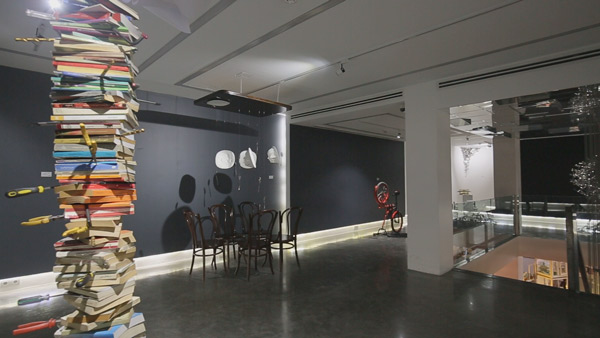
Aseman Orae Iranian contemporary artist brings her existence to gallery
Aseman Orae Iranian contemporary artist brings her existence to gallery Iranian contemporary art and artists, Sculpture and installation art By Maryam Roshanfekr Personification In literature, giving personality to Objects is called personification. Objects who start to “exist” and start living their lives. After a long silence, Aseman Orae brings her made up creatures to light and starts to tell their story. Her story is related to maternity, family and home, where everything gets softened and quietude, that is protected by […]

ناگفتههایی از بازیگران اصلی دنیای هنر و هنرمندان موفق
هنرمندان موفق چه مسیری را طی میکنند؟ ماگنوس رش نویسنده کتاب «چگونه هنرمند موفقی شویم؟» میگوید: حیرت میکنم از اینکه میبینم هنرمندان چقدر اطلاعات کمی از تاریخچه بازار هنر، ساختار قدرت و بازیگران اصلی آن دارند؛ مانند هر بازار دیگری، درک تاریخچه بازار هنر میتواند در پیشبینی آینده آن به ما کمک کند. همچنین در ادامه میدهد: زمانی که فعالیتم را در دنیای هنر شروع کردم، یک حرف، وِرد زبان همه هنرمندان بود: «نمیتوان خلاقیت را اندازه گرفت. موفقشدن یک […]

هنرمند/منتقد؛ هم این و هم آن
هنرمند/منتقد | اثر چیست؟ معنای احتمالی آن چیست؟ به چه درد میخورد؟ در این روزهایی که عکس و عکاسی از من گریختهاست یا من از آن فرار کردهام چه چیز میتواند برایم بامعناتر/بیمعناتر از دبیری بخش عکاسی یک مجلۀ هنری باشد. رنگ این روزها رنگ همهچیز را عوض کرده است. عکس برایم رنگباختهاست و میدانم به سبب همین رنگعوضکردنش در لحظه است که اینگونه دوستش میدارم.[…][۱] […] موضوع، خود عکاسی است همانگونه که چیزها خود عکس هستند. «من» هم تکهای […]

مسعود اسکندری ؛ عکاس مهاجر
مسعود اسکندری خویی متولد ۲۳ آذر ۱۳۴۰ دانش آموخته عکاسی از دانشگاه هنر . فوق لیسانس عکاسی از دانشگاه هنرتهران و مستند نگاری از دانشگاه Ryerson کانادا (Master of Fine Arts in Documentary Media) . تدریس در گالری هنر همیلتون و دستیار خانم Pearl Van Geest هنرمند و مدرس نقاش کانادایی .

The City of Slab; the city of loss
The City of Slab; the city of loss An overview of photographs taken by the award winner Iranian photographer; Hossein Fatemi, of Slab City; the last free place in America Text by Atia Shafee Heading south, past the Salton Sea where farmland turns to dusty towns, following the tyre tracks of trailers and camper vans deep into the parched desert, a landscape of shabby vehicles that have taken root in the ground emerges. For years, a diverse group of people […]




